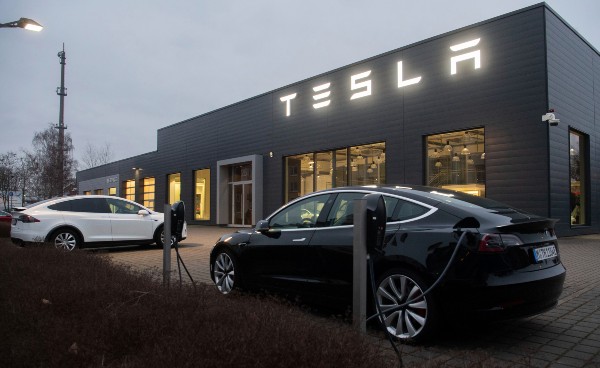:quality(80)/cloudfront-us-east-1.images.arcpublishing.com/morningstar/A7ORR3L6X5F2NPBZKEPGTG626Q.png)
You’re about to hear a lot more about climate adaptation. That’s the industry built around creating resilience in our infrastructure as the planet warms.
For all of society’s efforts to curb global warming—including the recently concluded COP28 United Nations climate summit—temperatures will continue to rise for at least another century. Global temperature is on track to rise by 2.5 degrees Celsius to 4.5 degrees Celsius by 2100.
After the hottest year on record, we’re likely to see continued fallout, including increased risks of wildfires, droughts, floods, and what scientists call “disruptive inundation.”
These certainties don’t mean we stop trying to cut emissions. But they do mean we need to reshape our lives to the warming climate—which creates opportunities for investors.
3 Key Climate Adaptation Themes for Investors to Consider
Sure, Home Depot HD and Lowe’s LOW are oft-cited beneficiaries of climate adaptation, on the thesis that people rebuilding their homes after an event such as a hurricane would pay multiple visits to home improvement centers.
But there are even better examples and themes.
- Heating, ventilation, and air conditioning, or HVAC. More air-conditioning systems will be needed to keep buildings comfortable in areas that didn’t previously need them, and longer summers will mean that replacement rates for existing AC units will rise. Those needs will only increase as cloud computing and artificial intelligence require large server farms with intense cooling needs.
- Water. Droughts and water scarcity incidents are likely to rise. New Orleans recently declared a state of emergency amid potential threats to the city’s drinking water, after saltwater flowed into the drought-stricken Mississippi River. More capital will be spent on water treatment, filtration, pumps, meters, and pipes.
- Engineering. Cities, towns, governments, and industries need to make infrastructure more resilient as the globe warms. As every port in the world faces rising seas, governments will need to step up their disaster warning and flood defenses. “Pretty much anything in infrastructure is an opportunity to build in climate adaptation and resilience,” says Julie Gorte, senior vice president for sustainable investing at Impax Asset Management.
How Big Is the Climate Adaptation Market?
It’s hard to know. The World Economic Forum sizes up the market at $2 trillion by 2026. To be sure, rising temperatures could cut into economic growth, but spending on climate adaptation measures can offset that.
That estimate is too small, says Chris Goolgasian, director of climate research at Wellington Management. “It will be in [multiples of] 10, 20, 30 trillions of dollars,” Goolgasian says. Consider the $750 billion Inflation Reduction Act, the landmark 2022 law promoting renewable energy. Spending was initially proposed at well over $1 trillion. “A big section of the cut was adaptation spending,” Goolgasian says. “There will be lots of IRA bills. The marketplace understands fiscal stimulus to be once in a decade. Those days are over.”
Instead, Goolgasian expects to see new legislative initiatives from many different jurisdictions for such things as protecting food infrastructure, coastal dredging, and building and infrastructure hardening. In 2022, for example, Florida passed the Home Hardening Sales Tax Exemption to help Floridians reinforce their homes, with such things as hurricane-resistant glass. The city of Toronto is offering subsidies to homeowners to protect their homes against basement flooding by doing such things as installing backwater valves and sump pumps.
What Companies Benefit From Climate Adaptation?
Here, we highlight 18 companies in industries like HVAC, water, and engineering that stand to benefit from this transition. This list is by no means exhaustive. And we’re not recommending them necessarily—you’ll have to do more research, checking the investment theses and financial metrics, including Morningstar Ratings and fair value estimates. But they’re a starting point to illustrate companies and trends that will benefit.
Benefiting From Global Warming
:quality(80)/cloudfront-us-east-1.images.arcpublishing.com/morningstar/Y63NAMJT4RG75NRNT3ND4D3G44.png)
One company worth noting from this list is Trane Technologies TT, the HVAC and refrigeration company spun out by Ingersoll Rand in 2020. Today, it’s a global leader in efficient heating, ventilation, and cooling, helping make smart buildings more efficient. A climate-investment darling, Trane has returned 20.9% a year over the past three years to Dec. 12, compared with 17.4% for the building products sector and 8.5% for the Morningstar US Market Index.
Like Trane, many of these companies once resided in other companies that spun them out, and we expect this trend to continue as investors seek adaptation pure plays. For example, HVAC and refrigeration specialist Carrier Global CARR was spun off by the former United Technologies (now RTX RTX) in 2020. In 2021, water company Zurn Elkay Water Solutions ZWS was spun out by Regal Rexnord RRX. In September, Danaher DHR spun off Veralto VLTO, its water-quality business.
Other Climate Adaptation Themes
What are some other beneficiaries? We checked in with investors.
Building materials. One fan is Tony Tursich, a portfolio manager at Calamos Investments, who specializes in sustainable equities. Tursich likes Kingspan KGSPY, an Irish building-materials company that has made innovations in insulated panels for energy-efficient buildings and high-insulation roofing that incorporates photovoltaics. “It’s exposed to long-term secular growth,” Tursich says. Among other things, Kingspan harvests and manages rainwater and is auditing the City of Sydney’s rainwater harvesting. Tursich also likes St. Gobain CODYY, which makes fire- and impact-resistant glass.
Efficiency experts. Tursich is a fan of Prologis PLD, the warehouse REIT that leases warehouse space to customers like Amazon. Prologis is the second-largest corporate producer of solar energy, which runs on warehouse roofs and helps customers be more efficient and reduce energy use.
Power generation. U.S. power demand growth has stagnated because of efficiency gains in appliances and lighting. That will change as heating and cooling needs rise and electric vehicles gain traction. “We’re moving back to trend,” says Matt Breidert, portfolio manager at Ecofin. Breidert is a fan of Constellation Energy CEG, which operates the largest fleet of nuclear power plants in the United States. Ironically, Breidert says, a Republican sweep of the U.S. House and Senate in the 2024 election could even benefit Constellation, if Republicans put brakes on solar and wind growth. You can find other nuclear plays here.
Green bonds, or bonds that raise money for climate-related projects. “Climate adaptation is becoming an integral part of mitigation,” says David Zahn, head of sustainable fixed income at Franklin Templeton. Indeed, many countries that border the Indian Ocean or the Pacific Ocean are “past mitigation,” Zahn says. According to the United Nations, adaptation costs in developing countries could reach $300 billion every year by 2030. Right now, only 21% of climate finance provided by wealthier countries to assist developing nations goes toward adaptation and resilience.
One U.S. example owned in Franklin Municipal Green Bond ETF FLMB is a 5% Alameda, California, bond maturing in 2048 that raised $17.5 million for embankments, a seawall, and other improvements to protect the district against a sea level rise of seven feet. Another is a 4% bond issued by the Metro Flood Diversion Authority of North Dakota, maturing in 2051 and 2056, which are being used to fund the design, construction, and maintenance of the Fargo-Moorhead Metropolitan Area Flood Risk Management Project, including a 30-mile stormwater diversion channel.
“Global warming is going to happen,” says Zahn. “You can argue what the cause is. Ocean levels will rise, and we need to adjust.”





:quality(80)/cloudfront-us-east-1.images.arcpublishing.com/morningstar/6BCTH5O2DVGYHBA4UDPCFNXA7M.png)

















